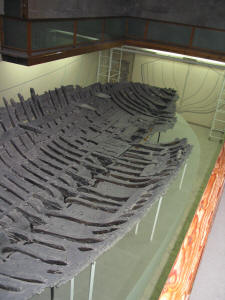A Brief History of Cyprus
Hellenistic Period (325BC - 58BC)
 |
| Greek Shipwreck in Kyrenia Castle |
In 333 BC, Alexander the Great defeated the Persian forces at Issus. When he marched south and laid siege to Tyre, the kings of Cyprus sent over 220 ships to help blockade the city.
Alexander continued his campaign to Egypt, where he founded the city of Alexandria, before marching east to the Indus. However, he died at the age of 33, and the new independence enjoyed by Cyprus and its city kingdoms was short lived.
The early death of Alexander, meant that he left no heir, although his wife was pregnant with a son. Fighting broke out between the Macedonian generals who fought to succeed Alexander. Cyprus came under the control of Ptolemy, the Sitrap of Egypt, who established a protectorate over Cyprus.
Alexandria became a centre of learning and of trade. Some of this rubbed off on Cyprus. The city kingdoms, which had enjoyed relative autonomy under the Assyrians and the Persians, now came under a central governor based in Paphos. Cultural and religious institutions remained largely untouched by the Ptolemies, though the Greek alphabet was gradually introduced.
The importance of Cyprus as a shipping and trading centre at this time is symbolised by the wreck of a Greek cargo ship, recovered by archaeologists off the north coast, and now preserved with its contents in Kyrenia castle..
By 58BC, however, the dynasty founded by Ptolemy had become weak, and when a Roman official was insulted by the nominal king of Cyprus, it was used as an excuse to annex the island, which became a province of the Roman Empire.